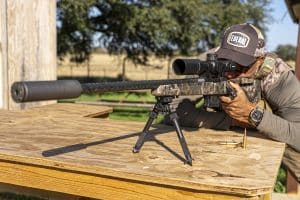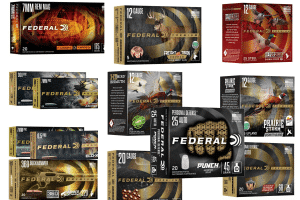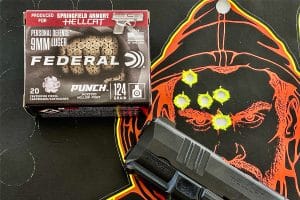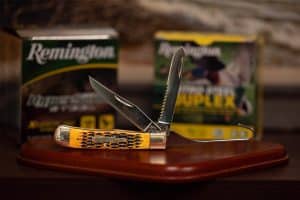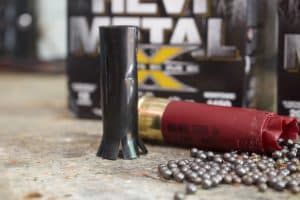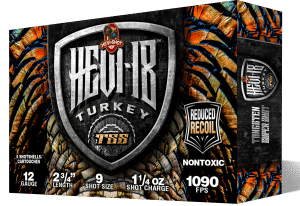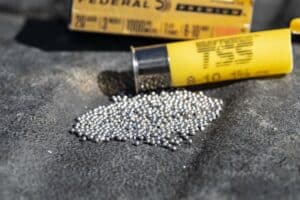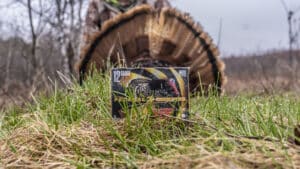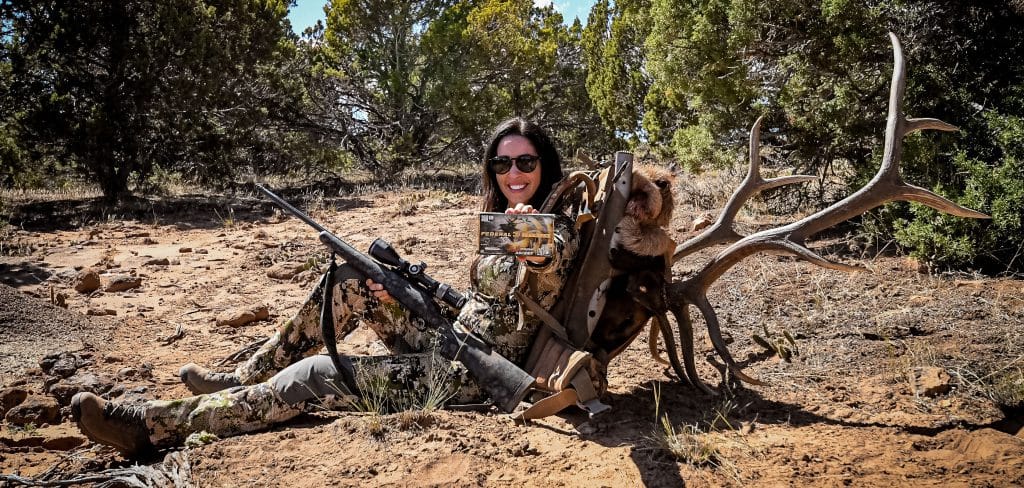
Federal Premium’s Terminal Ascent: Ammunition for the Serious Hunter
Sitting atop a small hill in the middle of a Wisconsin alfalfa field, I spotted a patch of deer hide through my rifle scope.
My range finder told me the hide was 330 yards away. So, the Terminal Ascent round I was using in 6.5 Creedmoor would drop 16-inches. Dial for elevation, hold for windage, I’d been taught at long-range shooting courses. I spun my scope’s elevation knob UP 4.75 MOA, settled into a prone position, and squeezed off the first round. And then a second round.
Both were hits. I knew because I was shooting at a rectangle of deer hide covering the front of a 20-inch-by-10-inch-by-10-inch rectangle of ballistic gel. With each impact a whitish rainbow of dust and gel particles appeared above the block.
The ballistic gel was provided by Ballistic Dummy Lab in Simi Valley, California, a top manufacturer of gel and other related products that simulate what bullets will do when impacting flesh and bone.

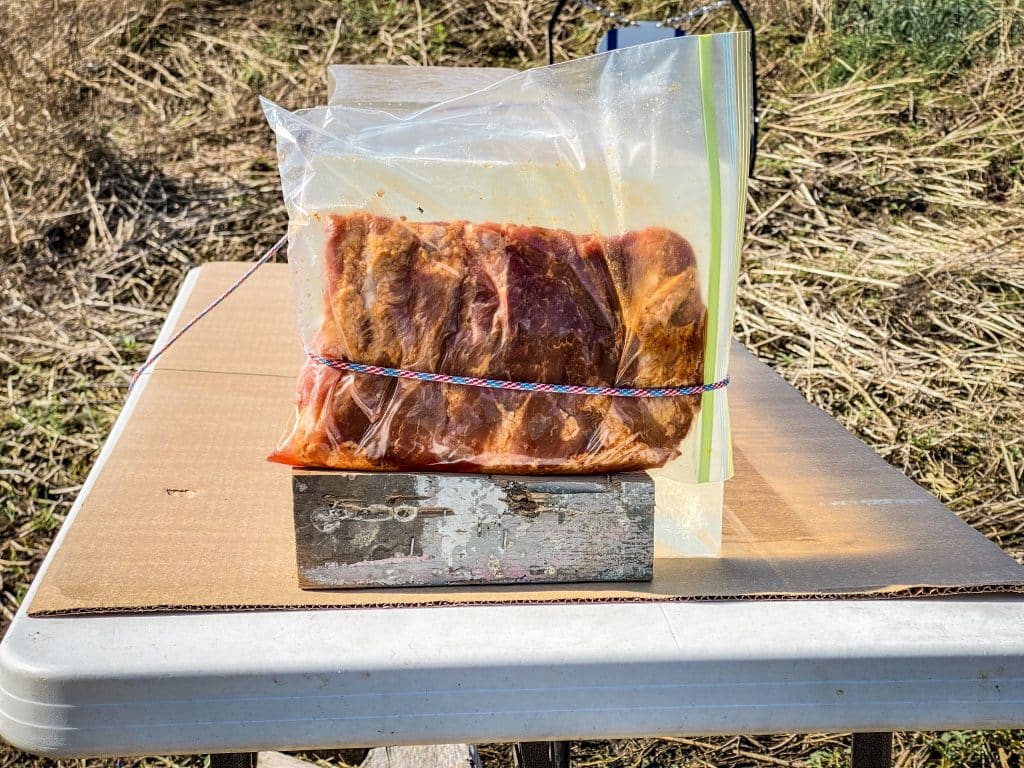
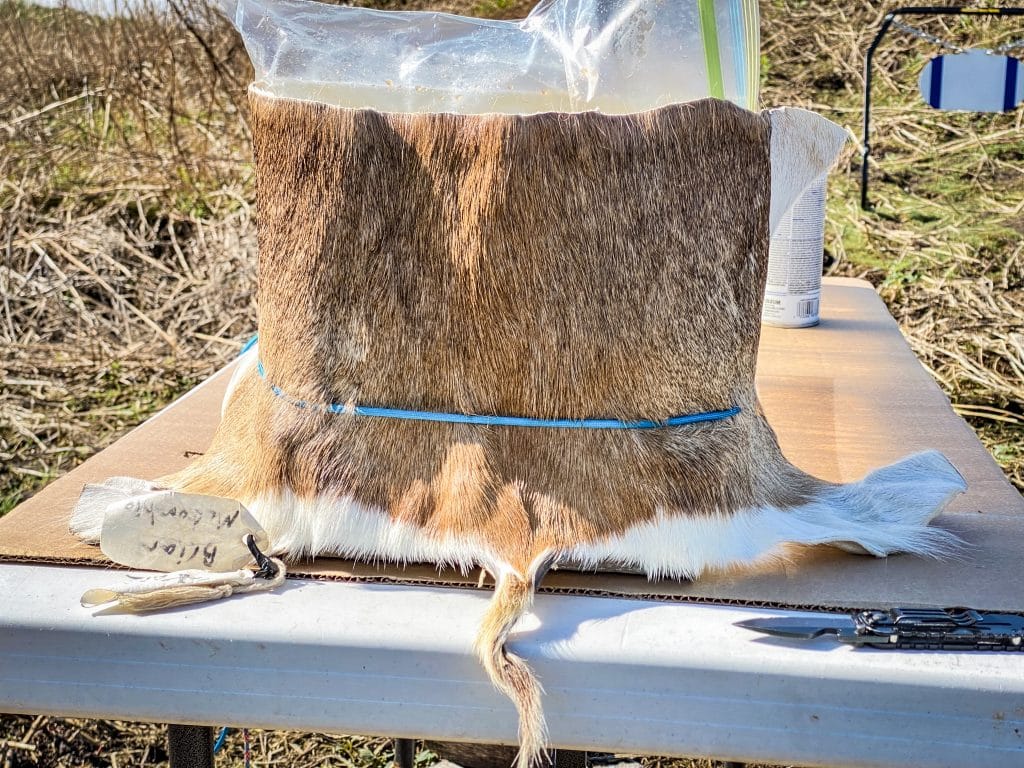
Actually, I’d lined up two Ballistic Dummy Lab blocks in tandem, thinking the 130-grain bullets might go through one. And between the deer hide and the front face of the first gel block, I slid in a rack of pork spareribs to better mimic what a hunting bullet is supposed to do: penetrate hide, flesh, and bone.
Once I’d examined the blocks shot with the 6.5 Creedmoor, I put two new gel blocks into place and performed the same testing with Terminal Ascent’s 300 Win. Mag. round.
The Bullet’s The Thing
Federal developed its Terminal Ascent line of long-range hunting cartridges to have accuracy similar to competition rounds yet with bullets producing the kind of expansion and energy dump needed for quick, clean kills.
Federal designed the Terminal Ascent bullets to expand at ranges out to 1,000 yards, distances at which most hunting bullets simply won’t expand as velocity has slowed too much.
Has Federal done it? The ballistic and accuracy testing I did with Terminal Ascent rounds in 6.5 Creedmoor and 300 Win. Mag. proved to me that Federal has indeed created a long-range hunting round very capable of taking down deer-sized and larger game at distances hunters wouldn’t have attempted years ago.
Of course, exactly how far of a shot a hunter can and will attempt depends on their own level of marksmanship, field conditions, and a hunter’s personal sense of what constitutes an ethical shot.
The Bullet

Terminal Ascent bullets are built around lead core, with those cores bonded to a copper jacket. The bullets also have thick copper bases, called “shanks.” The jacket and the solid shank help the bullets penetrate deeply and retain their weight through bone and tough muscle.
The Terminal Ascent bullet features Federal’s Slipstream polymer tip inserted into a large cavity in the bullet’s front. That tip breaks free upon impact, allowing fluid to enter the hollow core, the fluid generates pressure inside the bullet to generate expansion even at lower velocities.
Serrations along the front end of the bullet’s jacket also allow petals to peel back on contact at velocities as low as 1,400 feet per second (fps), speeds typically seen 1,200 yards downrange in the 200-grain 30-caliber loads.
Range Accuracy
I tested the Terminal Ascent in 6.5 Creedmoor using the Christensen Arms Modern Hunting Rifle, a bolt action featuring 22-inch carbon-fiber wrapped barrel. For an optic, I mounted a ZEROTech Thrive HD 2.5-15x30mm scope.
With the 300 Win. Mag. rounds, I employed a Browning X-Bolt Hunter bolt with a 26-inch barrel, topped with a Leupold VX-3i 4.5-15×50 scope.
Once zeroed, my initial accuracy testing involved several three-shot groups at 100 yards. The Terminal Ascent loads easily and consistently made 1.0-inch and better groups.

Terminal Ascent 6.5 Creedmoor also pegged two groups right at .70 inches, while the 300 Win. Mag. load scored a .71-inch group.
A Speeding Bullet
I chronographed both rounds using a Caldwell G2 Chronograph from Brownells. The G2 was set up approximately five feet from the end of the rifle barrels; I fired 10 rounds for each caliber.
The 6.5 Creedmoor load averaged 2,797.6 feet per second (fps) at the muzzle, with a Standard Deviation (SD) of 24.5. (In ballistics, SD shows how much variation exists in velocity from the average, among the sample shots.)
Terminal Ascent 300 Win. Mag. averaged 2,958.4 fps at the muzzle for an SD of 17.3.
Federal rated the 6.5 Creedmoor load at 2,800 fps at the muzzle, for 2,263 foot-pounds (ft-lbs.) of energy. The brand also used a rifle barrel 22-inches long, same as my rifle, and we generated the same ballistic data.
Federal rated the 300 Win. Mag. load at 2,810 fps at the muzzle and 3,506 ft-lbs. Why did my loads chrono nearly 150 fps higher? Barrel length. Federal’s testing was done with a 22-inch barrel, while my Browning X-Bolt Hunter sported a 26-inch barrel. Extra barrel inches generate more velocity as the gunpowder has more space (and time) to fully burn. (Generally, expect an extra 25- to 35-fps per added inch of rifle barrel.)
Federal lists the Terminal Ascent 6.5 Creedmoor round as accurate and lethal out to 1,000 yards, with more powerful 300 Win. Mag. as a 1,250-yard hunter.
Ballistic Gel in the Field

Ballistic gel is a handy way for ammunition makers to test their loads using a common material. Ballistic gel, in my case, 10-percent ballistic gel, is a kind of harder Jell-O-like medium that represents the average overall densities found in tissue, fluids, and bones.
I’ve done many gel tests. As a guy who writes about hunting ammunition, I’ve also retrieved bullets from inside the animals I’ve taken. Examining those bullets is the best way to judge the various claims made by the ammo makers as to a bullet’s effectiveness.
Reality: bullets dug out of animals rarely look like those shot into only ballistic gel. Gel produces nicely expanded bullets, with the front of the bullets often peeled back like symmetrical flowers. Bullets dug out of deer, hogs, and other game? Smashed up, missing petals, and non-symmetrical expansion. Not surprising given the dense muscle and solid bones these bullets pass through.
Attaching a piece of deer hide and a section of pork ribs to the front of my gel blocks wasn’t exactly the same as a deer, elk, or hog body. But I believe this set up came closer to showing what a hunting bullet can truly do versus shooting into gel alone.
Weight & Expansion
I dug my Terminal Ascent bullets out of the ballistic gel, two of the 6.5 Creedmoor, and one of the 300 Win. Mag. I actually had four hits on the gel with the Win. Mag. rounds, but three of them hit at various angles, and those bullets exited the gel.

All the bullets hit rib bone before entering gel. One of the 6.5 Creedmoor bullets must’ve impacted at just the right angle as one side of the front was sheared off. That bullet weighed in at 92.5 grains from the original 130 grains and expanded to .512 inches at its widest. It pierced 21.5 inches of gel.
The other 6.5 bullet fared better, weighing in at 126.5 grains, with the front half of it expanding to an amazing .773 inches, and traveling 22-inches into gel.
The Terminal Ascent 300 Win. Mag. bullet started at 200 grains and weighed an impressive 185 grains once retrieved. It expanded to .754 inches and punched through 24 inches of gel.
Way, Way, Out?
So how far can a hunter take an animal cleanly with Terminal Ascent rounds?
Federal provided a photo of actual 300 Win. Mag. bullets retrieved from hunted animals, along with ballistic data for each bullet. Out to 650 yards, the expansion looked really good, and the weight retention was an impressive 98 percent.
At 800 yards, though, the bullet’s front-end expansion started to deteriorate, and it continued to decline as the distances stretched to 1,000, 1,250, and even 1,350 yards.

Based on this chart and the velocities of the bullets at various distances, I wouldn’t take a shot at an animal with the 300 Win. Mag. at over 650 yards. And I wouldn’t shoot any further with less powerful 6.5 Creedmoor load.
Realistically, though, my shooting position would have to be perfect at 650 yards, with the animal standing very still and broadside.
Clearly, Terminal Ascent can truly reach out, given the right conditions. It is up to the hunter to decide when conditions are optimum for a long shot—and when it’s time to get closer!
Thanks for supporting us! We may earn a modest commission from affiliate links in our articles.









